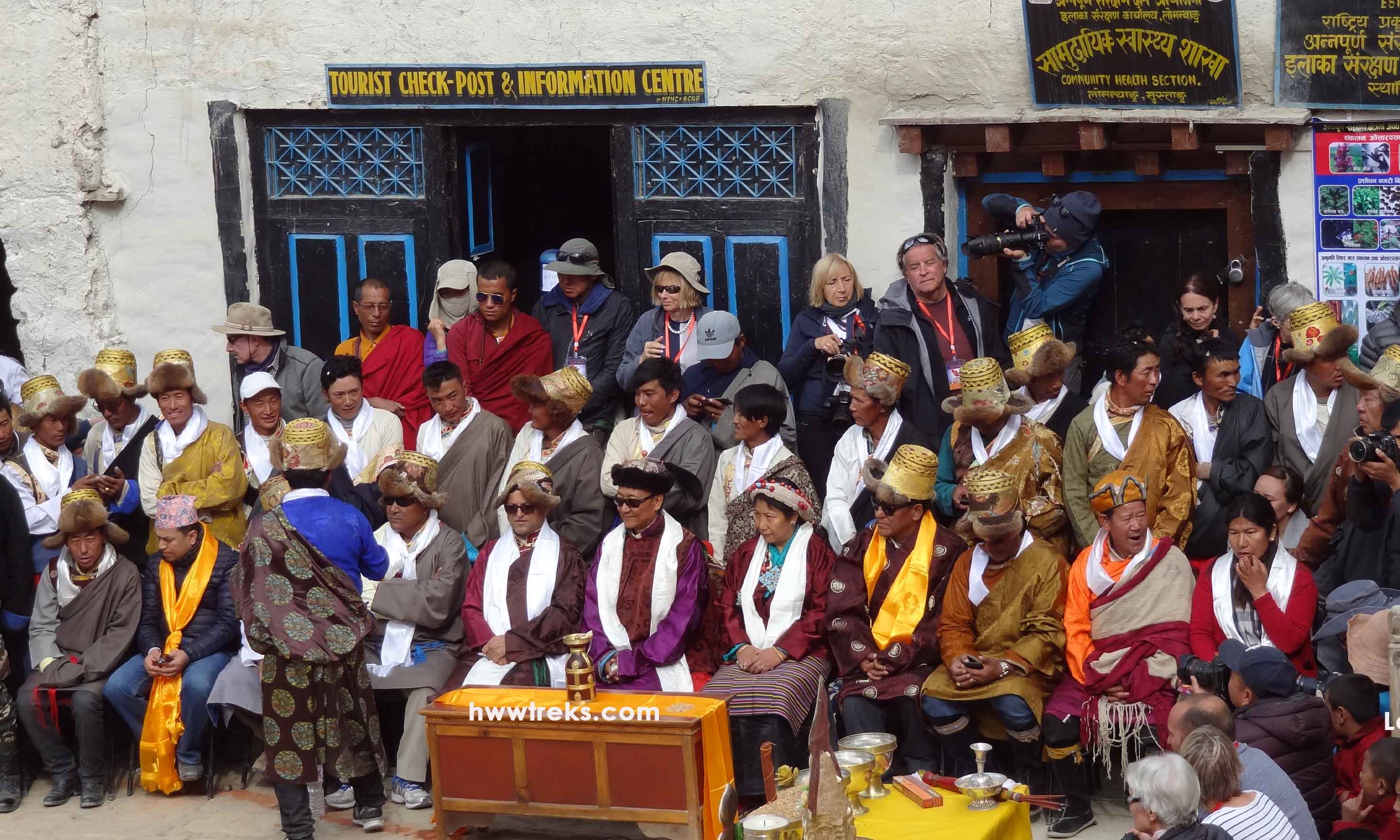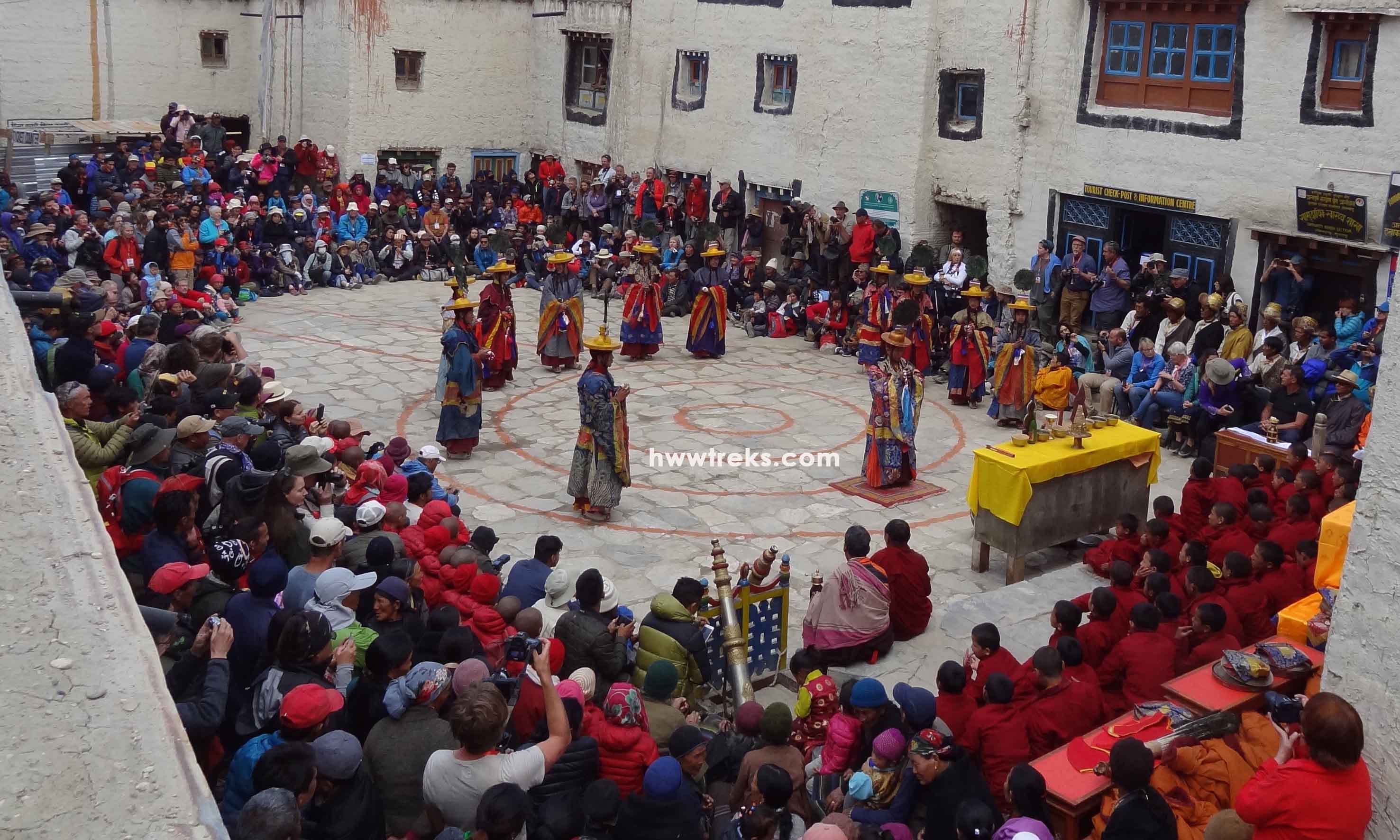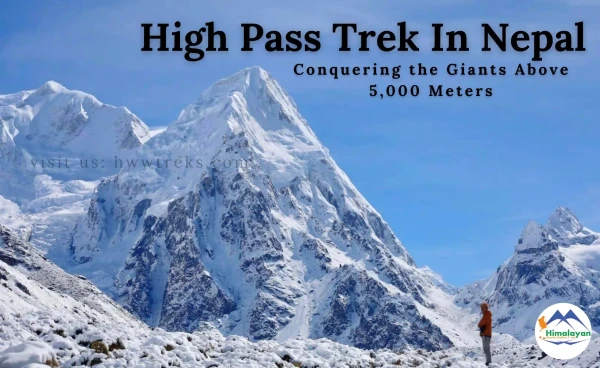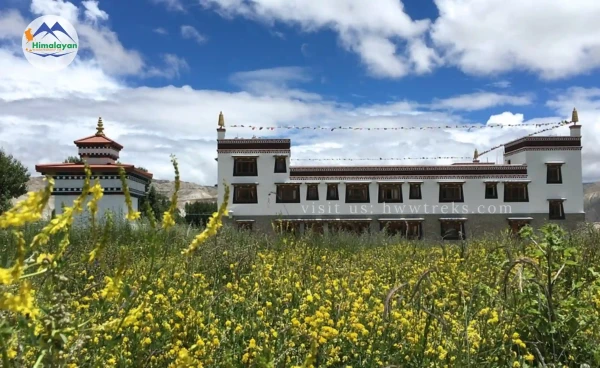- 05/26/2025
- Tags: Upper Mustang
- Himalayan Wander Walkers
Tiji Festival of Upper Mustang
The Tiji Festival is an auspicious Buddhist religious event started by the late Sakya Trizin Ngawang Kunga Sonam, a scholar who was brought by King Samdup Rabten of Lo Manthang at the end of the 17th century to cleanse the territory of demons. During that time the monks had been residing in Chhode Monastery and performed Vajrakila practices associated with rituals, which lasted for three days. Vajrakila is a practice that was introduced in Nepal by Guru Rimpoche, or Padmasambhava, the Tantric Master, in the 8th century. Since then, monks of Chhode monastery have performed this religious mask dance every year. Generally, the Tiji festival happens between April and May considering the Tibetan lunar calendar within the capital town, Lo-Manthang. It is a three-day celebration, a victory of good over evil, and consists of prayers, chants, and dances performed by monks dressed in very colorful dresses.
Himalayan Wander Walkers has provided every detail of the Tiji Festival in this blog via photo, video, and written form to guide you for this vibrant festival of Lo people. Please go through the details blog of the Tiji festival given below.
Contents [hide]
- Where and when does Tiji Festival happen?
- How to Reach Upper Mustang?
- Day wise narration of Tiji Festival
- Fist Day of Tiji Festival - (Tyoleh Jangchup Drubpa)
- Second Day of Tiji Festival - Bardo - (Mehleh Dakedawa)
- Third Day of Tiji Festival - Banishing of Demon
- 17 days Tiji Festival Itinerary
- Upcoming Mustang Tiji Festival Dates
- Conclusion
Where and when does Tiji Festival happen?
One of the main reasons international tourists come to visit Upper Mustang for its vibrant religious Tiji festival, locally known as Tenchi. Tiji Festival is a popular religious ceremony held in the courtyard of Lo-King's palace in the ancient walled city of Lo Manthang, in the northern Mustang region of Nepal bordering China by Kora La (4,660 meters). It has been considered the lowest drivable path between the Tibetan Plateau and the Indian subcontinent. It is currently being planned as a vehicle border crossing between China and Nepal.
The date for The Tiji Festival 2026 has already been updated. The Tiji festival will be celebrated on English dates of 14th, 15th, and 16th May of 2026 in Lo Manthang, Upper Mustang. According to the Tibetan, the lunar calendar is held annually for three days from the 27th to the 29th of the 3rd month every year. It is possible to do the whole trek depending on the teahouses.
The date for The New Tiji Festival 2026 will celebrate on 21st, 22nd and 23rd June.
How to Reach Upper Mustang?
To reach Upper Mustang, flight is the best option to save you time. The majority of the travelers from Kathmandu drive to Pokhara and take a flight to Jomsom. From Jomsom, some prefer to trek, and others drive to Upper Mustang. If you have enough time, then trekking is recommended to experience the authentic culture of Lowa, the locals of Mustang. Read our Upper Mustang Travel Guide for more details.
Day wise narration of Tiji Festival
Among the three major temples (gompas), Thubchen and Chode Monasteries will remain busy during the Tiji Festival. All three days, monks chant prayers in the morning. If you are a morning person, then you can participate and assemble with the monks in Thubchen Monastery. Each day the actual mask dance of the Tiji festival starts around 2 PM and lasts for about 3 hours. All morning of the first day, you could see locals sweeping the palace square and sprinkling water into the alleys and the main square where the dance would happen. Monks are shuffling around the village carrying furniture, carpets, masks, and all sorts of instruments that would be used later in the festival ceremony in the palace square.
Most of the foreigners take advantage of this hustle and bustle and leave the village for hikes around Lo Manthang. Marzon is one of these places, a collection of caves all dug in one impressively large rock, pocked with holes in its entirety. Locals say that it used to be both living quarters and meditation caves of Bonpo Lamas in the early times. There are several things that you can do, such as horseback riding, four-wheel driving, visiting Yak herders (Dokpa), hiking to Teri Khecho Ri, hiking to Thinger (the summer palace of Lo-King), and exploring caves and monasteries in Chosar. During your stay at Lo-Manthang, there are several things to do that are worth experiencing.
The festival lasts for three days, which are explained in detail below.
Fist Day of Tiji Festival - (Tyoleh Jangchup Drubpa)

Today, on the first day of the festival, the monks performed a dance called “Tso Chham,” in which they reenacted the harassment of the demon, Ma Tam Ru Ta. The sacred dance is part of the meditation practice based on the Tantra text related to Vajrakumar/Vajrakila. Its original name is Tenpa Chirim, which confers the benefits of Buddha’s teaching to all sentient beings. According to the Buddhist tradition in Mustang, the performers of this dance receive the empowerment of Vajrakila, especially the Tsowo (head of the masked dancer), who had to complete a three-month meditation retreat before the festival. The Tiji festival is attended by the members of the Mustang royal family as well as by all the villagers of the seven provinces of Upper Mustang who come to witness this sacred dance.
Second Day of Tiji Festival - Bardo - (Mehleh Dakedawa)

The dances performed on the second day of the festival are called Na-Cham and have different significance. It marks the birth of Dorje Sonam, whose demon father is watching the event from under a blanket in the middle of the square. Of course, the birth is a rebirth that goes through a bardo, and the dances are performed first by the same dancers as on the first day, followed by terrifying manifestations that meet the soul on his way through the bardo (transition of death and birth) till its rebirth. The dances have a sense of humor on occasions to be pleasing to the audience and cheer when they feel that the demon would be further challenged.
You will witness several dances, including some terrifying masks that resemble the protector deities of the royal families who try to guard the soul in its travel through Bardo. The dance of skeletons who come shivering are the deities that come to receive the soul of death. Then the group of dancers with animal-masked deities can be seen on various frescos in Tibetan Buddhist temples: birds, tigers, horses, pigs, etc. The dog-masked performer keeps conferring over a box that contains the demon, shampa, and he gives a piece of the death shampa to all the surrounding masked deities whom they are able by this process to fold into Buddhists, transforming into protectors of the dharma and fighters against the demon.
Third Day of Tiji Festival - Banishing of Demon

On this last day, the entire setup changed: no more circle for the dancers; the place for the drummers was in the middle of the square; the audience was quite small; most of the foreigners left already because of the limited 10 days of permit. But the third day is the most interesting of the entire festival. All the villagers of the entire Upper Region surrounding Lo Manthang assemble in one tiny square. If you are planning to visit the upper Mustang during this grand festival, we recommend every visitor keep the full three days to witness Tiji.
The haunting music of the telescoping trumpets and drums gave way to the Tsowo, who, impersonating Dorje Sonam, was keen to destroy once and for all the demon. Tsowo uses different Buddhist tools such as a three-colored rope, Tibetan bell, the Purbhu (sacrificial knife), or Dorje that is carried by all lamas. Then the entire team of performers walks outside the ancient wall with chanting and spiritual music. You will see how the local people are mesmerized by the sounds and the elements of the entire show the monks were able to put together. This will end up in an open field at the edge of the town.
In the field, Tsowo does his final spiel (or spell). He starts his dance with the incessant drumming and haunting horns, takes a bow, and hits somewhere in the field, symbolizing that he hit the demon, or remaining demons, right in the middle of the forehead. He took a slingshot (used by Tibetan cattle herders) and sent two stones in the same direction, hitting symbolically the demon again. All was done on the background of gunpower fired from old muskets by the many locals in charge of this task, probably about 10 shots at a time. The noise was terrifying and was supposed to scare any other demons that may have had any ideas to come into this realm.
Tsowo’s last act was to recite prayers and dispose of each of the demons’ food, a process done with the same noise of gunpowder muskets. The job completed, Tsowo and his entire monk retinue started to get back in town with all the audience following in pursuit all passed together inside the walled city, now cleansed of all evil, stepping at the main gate over a hay fire where we were supposed to spit out all our evil left in each of them. Then all the mask dancers including the Tsowo return to the palace square and the king and locals offer Tibetan scarf (Khatak) to all the performers as a thanksgiving way.
17 days Tiji Festival Itinerary
Day 1: Arrival in Kathmandu 1340 m.
Day 2: Full-day Sightseeing tour around Kathmandu Valley 1340 m.
Day 3: Drive from Kathmandu to Pokhara (820 m/ 5 to 6 hours)
Day 4: Fly from Pokhara to Jomsom (2720 m) and trek to Lubra village (2972 m).
Day 5: Drive to Samar and hike to Sangmochen via Chungshi Cave Monastery.
Day 6: Trek to Dhakmar (3450 m/5-6 hours).
Day 7: Trek from Dhakmar to Lo Manthang (3850 m/6-7 hours via Ghar Gompa and Marang-La Pass) and observe the First-day Tiji Festival.
Day 8: Visit the monastery in the morning and observe the 2nd-day Tiji Festival.
Day 9: Morning Hike to Chosar and observe the final day of the Tiji Festival.
Day 10: Trek from Lo Manthang (3750 m) to Yara (3580 m). 5-6 hours
Day 11: Rest Day at Yara visit Luri Gompa.
Day 12: Trek Tange (3,340 m) 5-6 hours.
Day 13: Tange to Chuksang (2980m) 7-8 hours
Day 14: Drive to Muktinath, visit temples, and drive back to Marpha.
Day 15: Drive to Pokhara; 7-8 Hours
Day 16: Drive by Tourist Bus to Kathmandu
Day 17: Final Departure to your port of Destination
Upcoming Mustang Tiji Festival Dates
- 2026 Main Tiji Festival Date
The date for the 2026 Main Tiji Festival has already been updated. Tiji festival will be celebrated on the English dates of 14th, 15th, and 16th May 2026 in Upper Mustang. - 2026 New Tiji Festival Date
The date for the 2026 New Tiji Festival has already been updated. Tiji festival will be celebrated on the English dates of 21st, 22nd and 23rd June 2026. - 2027 Main Tiji Festival Date
The date for the 2027 Main Tiji Festival is not published here, but we know the dates. If you are planning for the 2027 Tiji Festival, then please feel free to inquire with us. We will send you the dates via email. - 20267 New Tiji Festival Date
The date for the 2027 New Tiji Festival is not published here, but we know the dates. If you are planning for the 2027 Tiji Festival, then please feel free to inquire with us. We will send you the dates via email.
Conclusion
There are two main reasons that the details of this story are still lacking. They are locals who do not know the details of the dance no matter though probably watched it numerous times. The second reason is that this is all about tantric teaching, and normally monks refuse to answer. The Tiji Festival is a popular religious ceremony that is held in the courtyard of Lo-King's palace in the ancient walled city of Lo Manthang. The Tiji festival is celebrated every year between April and May in Upper Mustang. During Tiji, all the guest houses and hotels of Lo-Manthang get busy with their guests who come to witness the mask dance of local monks by trekking, overland driving, and some even by helicopters.
Check our Fixed Departure Tiji Festival Trek



